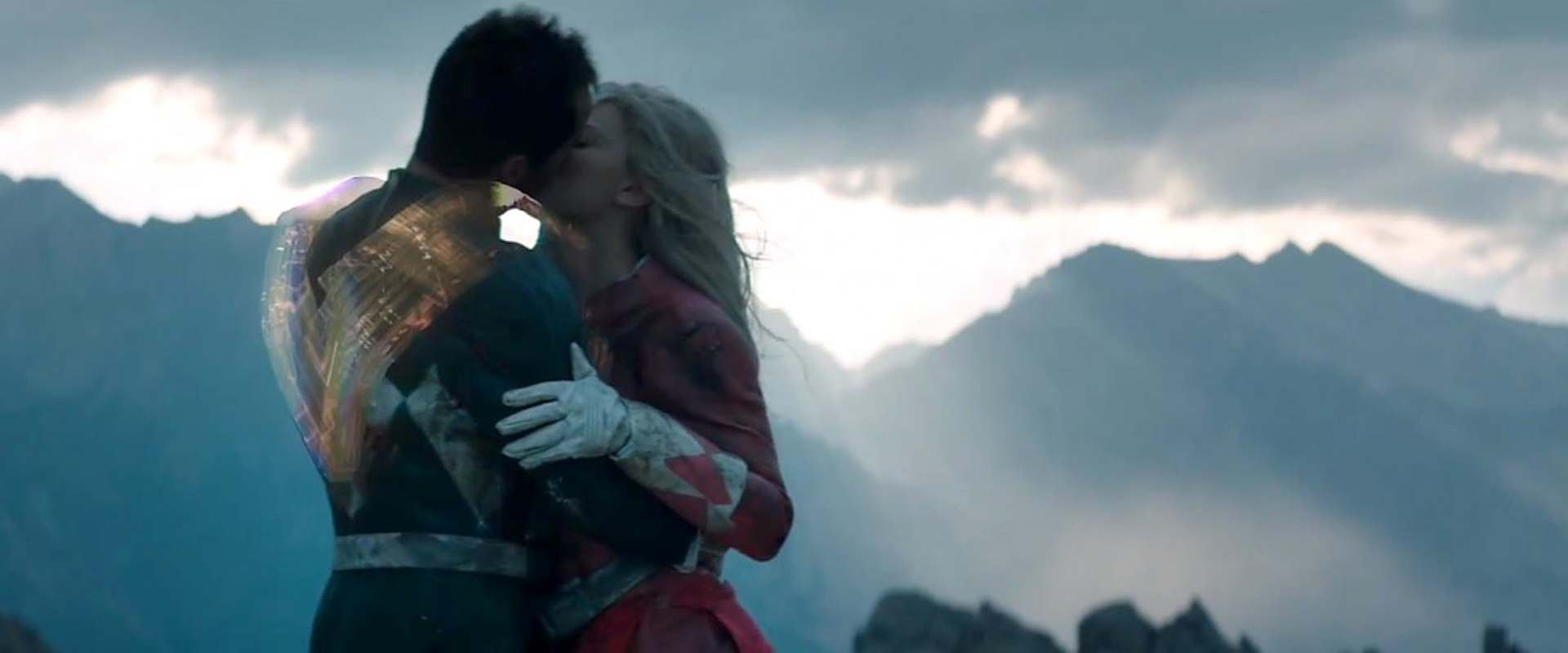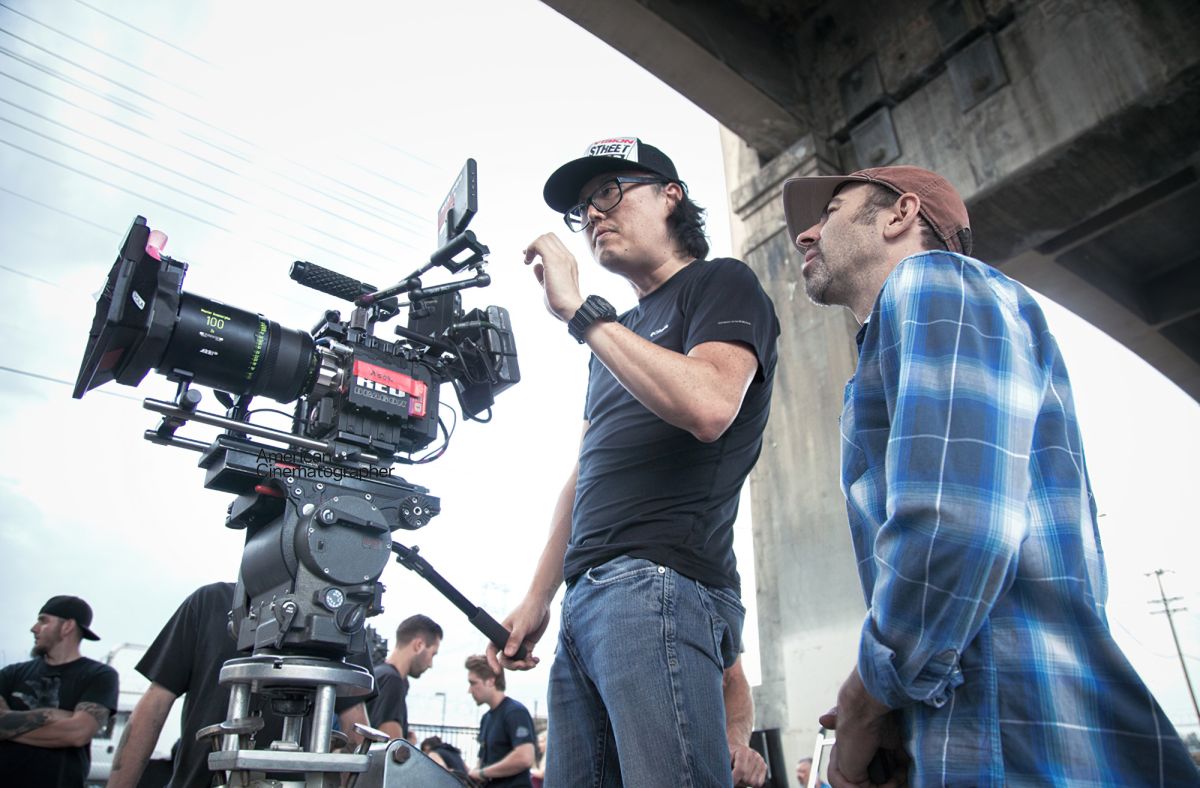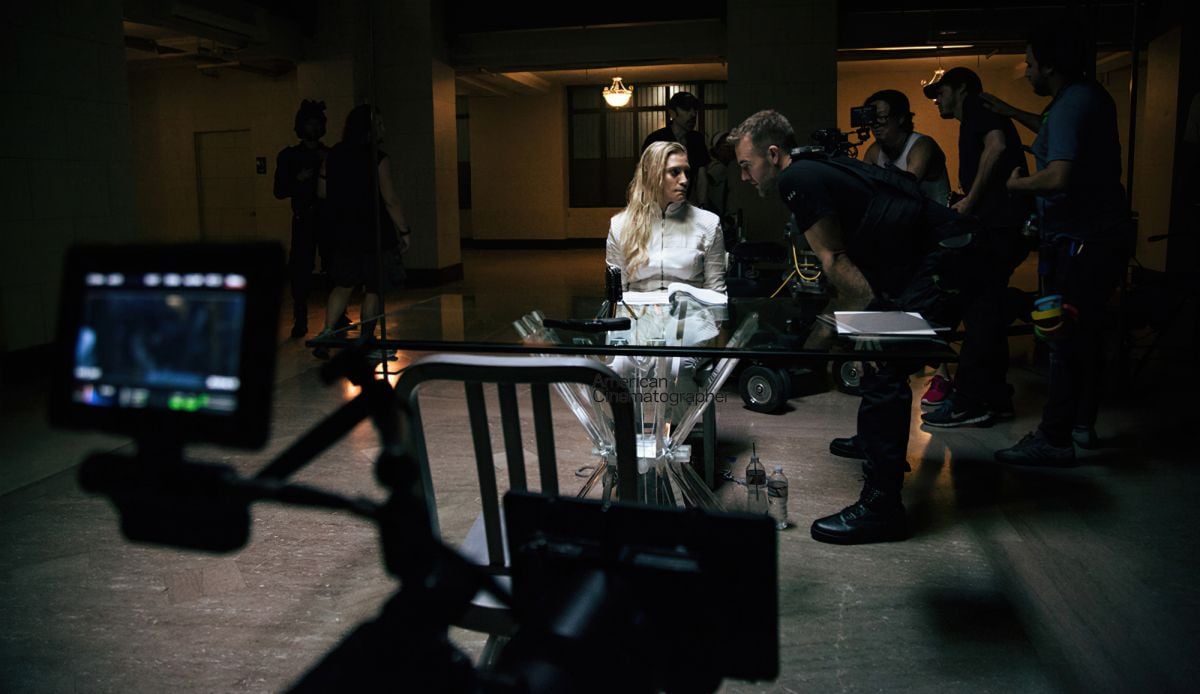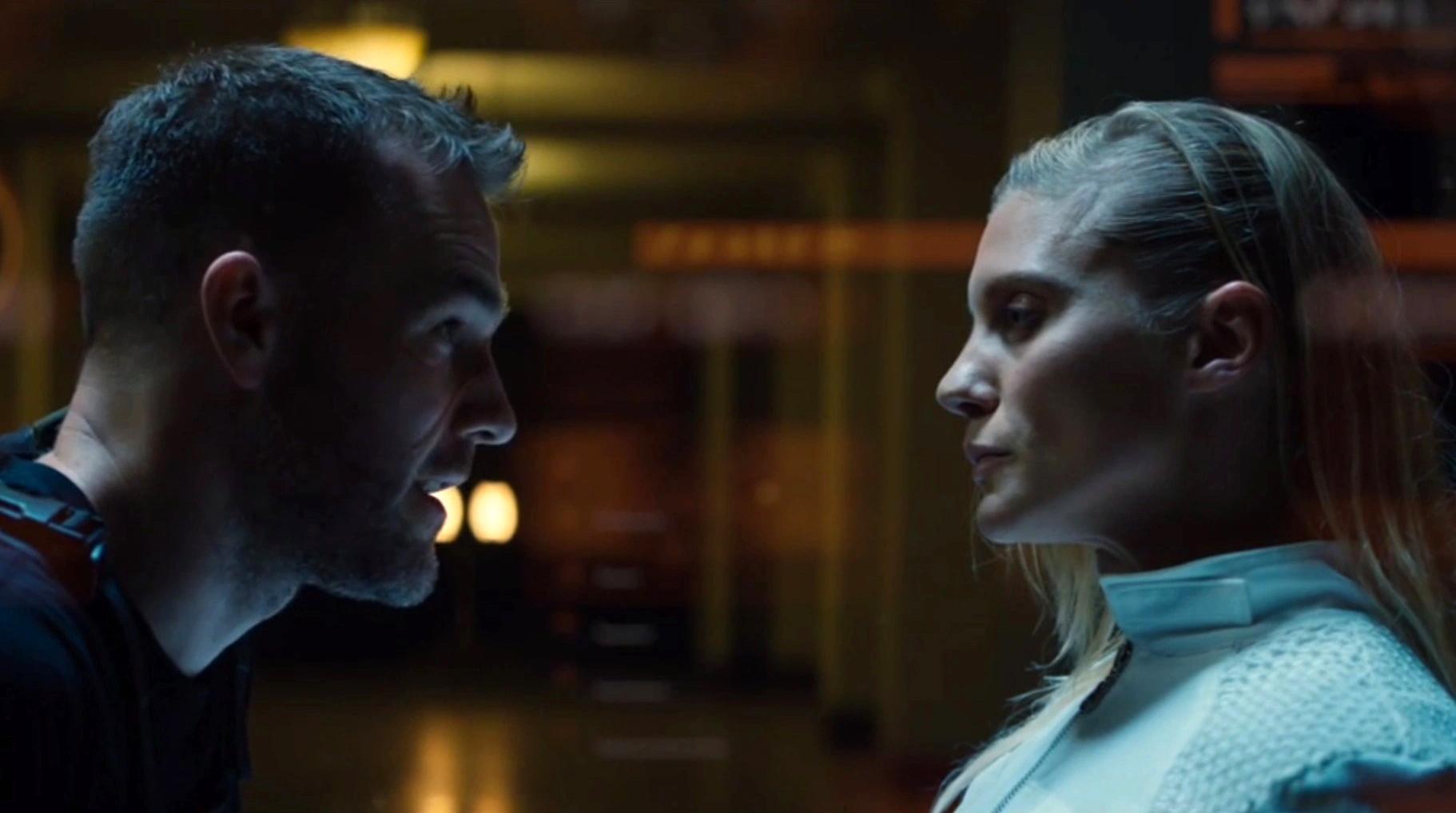
Power/Rangers Redux
Cinematographer Christopher Probst breaks down some key scenes in this 14-minute short that became a viral video sensation.
This article was originally published in AC March 2015.
Unit photography by Renn Brown. Frame grabs and photos courtesy of the filmmakers.
We were on set shooting a commercial in London when director Joseph Kahn first mentioned the idea of doing a “fun little short film” in our supposed downtime between jobs. Having worked with Joseph for over 20 years, I knew “fun” and “little” were definitely open to interpretation, but I also knew that if he was itching to flex some creative muscles independent of any ad agency or studio, it would be exciting indeed. And when he sent me his script to Power/Rangers, I was hooked.
Joseph’s take on the children’s television series from the 1990s not only modernized it, making it darker and more mature, but also turned those often cliché and corporatized tropes on their heads by amping up “dark and gritty” to the nth power. The original Saban-produced TV series was a tongue-in-cheek teen superhero show that utilized existing fight footage from a Japanese program (featuring acrobatic martial artists clad in colored action-figure-type suits and face-covering helmets) and added new dialogue scenes with American actors around those action sequences. The show was a massive hit with young audiences. For Power/Rangers, Joseph chose to honor some of the original characters and storylines from the show’s first few seasons and effectively “catch up” with those characters decades later; their hopes and dreams have been shattered, the troop has been disbanded, and they are all being systematically hunted down.
Joseph and I have a constantly evolving discussion on the process and craft of filmmaking, so going into this project, I knew we wouldn’t be attempting to make a light-hearted frolic. We would be pushing forward all our ideas about story and technique and molding them to fit into the action/superhero milieu. It would be an opportunity to make something very unique in a popular genre. That was an intriguing idea.
The first question to address was what the look of this short film should be. This question, of course, encompassed: What aspect ratio? What tonal quality? What camera movement? Joseph and I agreed that an anamorphic frame would suit the subject matter, but we didn’t necessarily want lens flares incessantly pinging the lenses for no apparent reason. I had keenly followed news about Arri/Zeiss Master Anamorphic lenses when my camera-rental house of choice, Camtec in Burbank, Calif., received one of the first sets to hit the United States.

However, I had slight misgivings about the lenses at first, as they were so perfect I feared Arri/Zeiss might have engineered out all the artifacts that many cinematographers love about anamorphic lenses. But when Joseph and I went to Camtec to compare the Master Anamorphics to the new Cookes, as well as older sets of Hawks and Kowas, we felt the straighter lines, complete lack of breathing and blindingly fast apertures of T1.9 across the entire set of Master Anamorphics made sense for our project. We could embrace the best of what anamorphic lenses afford — namely, the longer-lens compression for the same relative field of view, and the oval bokeh in the out-of-focus regions of the frame — and also have the performance of, say, a spherical Master Prime.
Once we began scouting the locations and designing the sets and sequences, the visual tone of Power/Rangers fell into place very quickly. Even though we were funding this project out of pocket and had very little budget to work with, I knew there were certain tools and crew we had to have in order to deliver the film as we envisaged it. For starters, Joseph and I understood immediately that we would be shooting with Red Epic Dragon cameras. We have been using Red cameras since the very first year the Red One was introduced to the market, and we’ve watched and adapted as Red’s camera systems have improved and evolved. (See AC Feb. ’10 for my account of my experiences with the original Red One M.) Over time, a camera choice that was initially a budgetary necessity has become our emphatic preference. Jarred Land and Brent Carter from Red Digital Cinema must be singled out for their assistance on Power/Rangers, and for their unwavering support of all our projects.


Next, I relied heavily on my regular commercial crewmembers to lend a hand on this passion project. My entire grip department, under the supervision of my longstanding key grip, Eric Budlong, rose to the challenge and covered me across the seven shooting days for the 14-minute short. My regular dolly grip, Johnny Segal, also pulled double duty, pushing dolly and keying for me for a few of the days when Eric had other commitments. The rest of the grip department were all trusted collaborators, including Kaiyoti Pesante, Chris Updegrave, Randy Vega, CJ Moriarty and Mike Rodriquez.
The electrical department featured many members of my gaffer Nizar Najm’s crew, including Spencer Scranton, who stepped into the gaffer’s role with me for the first time after Nizar got called out of town for work. Assisting Spencer were Anthony Najem, Ruth West and Joel Gill. And for the last two days of the shoot, my old gaffer Russell Griffith, who now works mainly as a cinematographer himself, came in to help with a lengthy pre-rig of a warehouse space we used as stages for a North Korean military compound.
In the camera department, we were fortunate to have 1st ACs Darrin Nim, Kevin Hughes and Rob Royds, who stepped up and pulled some amazing focus wide open at T1.9. They were aided by 2nd AC John Mandish and DIT Tyson Smith.
Produced by Adi Shankar and Jil Hardin, Power/Rangers opens with a series of quick, staccato point-of-view shots from a ranger caught up in a giant-robot battle in the desert. The sequence was shot with a small splinter crew in the Alabama Hills rocks near Lone Pine, Calif. For this sequence, Joseph wanted to experience the events entirely from the point of view of the Pink Ranger (Katee Sackhoff), whom we soon learn is the pivotal character in the short.
We selected several areas around the rock formations to stage different bits of action, and I planned our day to keep the sun backlighting the characters as much as possible. Chief among my concerns for this location wasn’t dragging out 18Ks to try to overpower the natural lighting; rather, I was concerned about trying to introduce practical smoke, spot fires and flying debris in the form of black cork being thrown into the air to rain down on the battling rangers. Occasional use of bounce boards and negative fill was more than enough to achieve the look we wanted. Joseph and I agreed going in that our budget wouldn’t allow for practical explosions or mortar blasts; those effects would be added in post by visual-effects house Ingenuity Studios. (This work was supervised by Chris Watts, Dave Lebensfeld and Grant Miller.)
After we see the Pink Ranger’s helmet knocked to the ground amid smoldering debris, we cut to a futuristic interrogation chamber where the Pink Ranger is being grilled by Rocky (James Van Der Beek). We mulled over how to go about creating a “futuristic” interrogation space in the location, the marble lobby of an old Art Deco bank in downtown Los Angeles. We decided to place a glass “cube” in the center of the large marble room and make the walls of this cube touch-screen graphic computer displays with which characters could interact in order to reveal critical plot information and help sell the futuristic setting. We briefly considered bringing in large sheets of Plexiglas, but ultimately tossed that idea aside because of budgetary constraints, and because we reasoned that any physical material might give us unwanted reflections that would have to be painted out in post so they wouldn’t interfere with the CG text that would be added. Ultimately, we settled on creating four 1”-square metal posts to represent the four corners of the glass cube; this would help the visual-effects team track where the glass walls would be and give us some visual markers to aid in framing up our shots.
Lighting the large interior posed its own challenges. Shooting in a historic building always means you have to respect the structure, and no rigging can be attached to the building itself. Also, we only had the actors for the long dialogue scene for one day, so we needed to be able to shoot quickly and in any direction. Building up large truss towers or the like was out of the question. I knew I wanted to have some sort of controlled soft toplight for the interrogation, and to play with the color contrast between the old-world warm-toned building and the futuristic glass cube inside it, so I turned to my key grip’s favorite weapon: the Max Menace Arm. Adding a custom 6' extension to the basic Max Menace, we attached a daylight-balanced Kino Flo Wall-O-Lite and were able to fly the skirted soft light 20' above the talent. The design of the Max Menace allows a single operator to easily crank the arm up or down, and it can support substantial weight (as noted on a chart affixed to the device).
For scenes set in this low-light environment, I decided to utilize Red’s new customizable OLPF modules and fitted our twin Dragon cameras with Red’s Low Light Optimized sensor filters. This option really comes into play when the mysterious Green Ranger, Tommy (Russ Bain), launches an attack on the guards and Rocky in an apparent attempt to free the Pink Ranger. As if on cue, the lights in the building cut out and begin to flicker as the Green Ranger dispatches all the guards in short order with his gleaming futuristic sword, leaving just Rocky to deal with his former partner.
For the remainder of the film, I had all the available electricians hand-flicker individual Kino Flo ballasts, which were several 4' 4-bank Kinos set as edgelights and floor-level up-glows on the actors. The existing architectural lighting, which consisted mainly of dimmed-down beaver-board-mounted Par cans uplighting the arches in the balcony, remained unaltered.
Another key action set piece in Power/Rangers features the Black Ranger, Zach (Gichi Gamba), and is recounted by Rocky in voiceover. In the sequence, we see the Black Ranger’s adrenaline-fueled exploits after the ranger unit has been disbanded. As Zach sinks into a downward spiral of hookers and drugs, Rocky explains, he eventually takes on mercenary missions for the rangers’ old enemy, the Machine Empire. One of these missions constitutes the blood-splattered action scene in the middle of the film. The sequence begins with Zach jumping out of a military cargo plane and crashing through the roof of a North Korean military compound, and then he unleashes a healthy dose of “Morphin’ Time” on the hapless Korean thugs.
The Korean-compound interior was shot at the Sun Chemical warehouses on the outskirts of downtown L.A. Because the location features dozens of glass skylights, we opted to shoot the entire fight scene at night in order to control the light coming in the windows. The interior space at Sun Chemical is very sparse. There are no actual lighting fixtures remaining in the building. My idea for the fight scene was to create some interesting shafts of warm sodium-vapor light coming in through the windows, ostensibly from towers outside. To augment that, I’d create a more industrial feel inside with rows of ND’d-down fluorescent fixtures fitted with cool-white bulbs.
To rig the warehouse space, I called upon Russell Griffith, who I knew had a storage container full of 8’ fluorescent “shop lights.” To mount the rows of fluorescents, I first had the grip department hang four 60’ lengths of pipe from various pick points in the ceiling; this created a common-level straight line from which we could drop chains to suspend the fluorescents, which were spaced about 1' apart. Next, several production assistants and I cut rolls of ND.9 gel into 6" sections, just wide enough to wrap cleanly around a fluorescent light bulb, and clear taped the ND to every bulb in the scene. We had to gel about 64 individual tubes to get the ambience down to the level I wanted. But without the ND, the room would have felt like a grocery store. Finally, the art department, led by production designer Brett Hess, brought in some old tungsten scoop lights that we hung in the middle of the room. After a prescribed amount of haze was added, individual shots were augmented with some floor-based Kinos, a Kino backlight mounted on the Max Menace Arm, and judicious use of bounce fill and negative flagging.
We shot a funeral scene under the 6th Street Bridge in downtown Los Angeles, a scene in Zach’s high-end apartment, and a scene in an alleyway showing Machine Empire robots searching for the elusive Green Ranger.
The alleyway was created between two of the warehouses at Sun Chemical. I asked the art department to build out a sort of shanty-town fence wall to narrow the corridor, and then the grips erected a 20’x20’ greenscreen at the end of the alley so Ingenuity Engine could add a CG set extension offering a glimpse of futuristic L.A., complete with flying cars.
To light the alley, I started with a 20-by Ultra Bounce spanning the two buildings overhead in the middle of the set. I bounced a Joker 800 with 1/2 CTB gel into that for an overall, slightly underexposed ambience. Next, the electricians raised an Arri M18 gelled with 1/2 CTB and 1/2 Plus Green mounted on a scissor lift from behind the greenscreen to provide a hard backlight for the alley. The art department dressed the set with a handful of china-hat “street lights” (we dimmed tungsten bulbs way down on dimmers), as well as a few spot fires in trashcans. As a sentry robot spots Tommy in the rubble, I had a walking 4'x5' greenscreen hide me as I operated two handheld Xenon flashlights as though they were the robot’s “eyes.”
Cinematographers occasionally take on passion projects that kindle our creative fires. Power/Rangers ticked off every box of technique, genre, tone and storytelling that I was eager to tackle, and the gamble was well worth it. Joseph and I are extremely proud of the film, and we are deeply indebted to our crew and vendors for accepting compensation that was nowhere near what their contributions were actually worth.
You'll learn more about the Power/Rangers shoot in this behind-the-scenes featurette.
As an aspiring cinematographer, Probst previously wrote numerous stories for AC — covering such films as Saving Private Ryan, Fight Club and The Matrix — expanding his own knowledge base through his reporting. He later became a member of the ASC on the basis of his own creative work. You’ll find an “ASC Close-Up” profile on him here.
Probst is also the co-author of The Cine Lens Manual and recently shot the StEM2 project The Mission.






